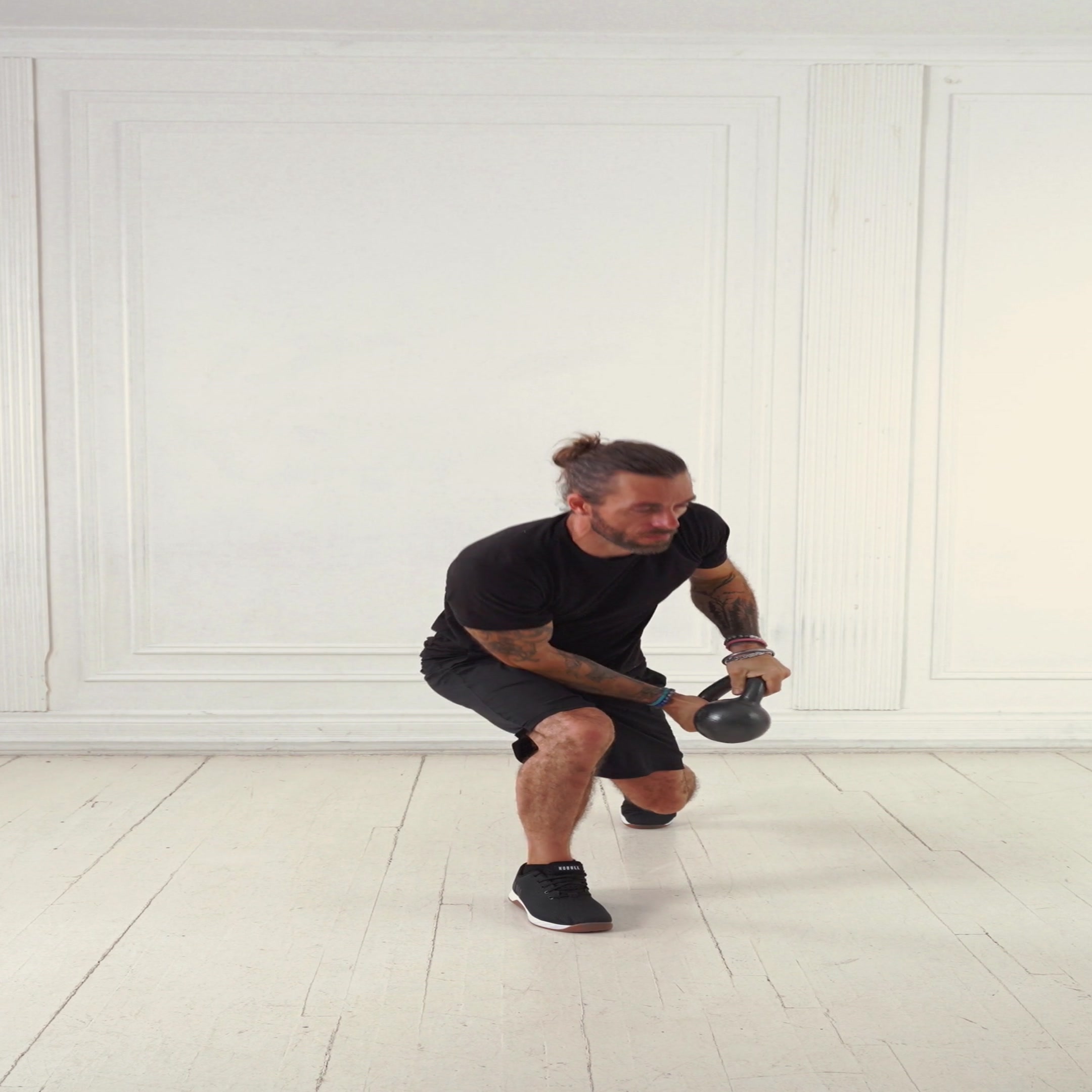Kettlebell Side Bend
 Auto Detected
Auto DetectedA standing isolation exercise using a dumbbell to target the obliques for core strength and stability; commonly used in routines for hypertrophy and functional balance, performed unilaterally on each side.
About Exercise
Equipment
Kettlebell
Difficulty
2/5 • Beginner
Primary Muscle Groups
Obliques
Secondary Muscles
Abs, Lower Back, Forearms
Popularity Score
6
Goals
Training Style
Setup Requirements
Requires Rack
No
Requires Bench
No
Requires Spotter
No
Space Needed
Small
Noise Level
Low
Muscle Breakdown
View Muscle MapObliques
10/10External Obliques, Internal Obliques
Abs
5/10Rectus Abdominis, Transverse Abdominis
Lower Back
4/10Erector Spinae
Forearms
3/10Flexors
Programming
Typical Rep Range
10-20 reps
Rest Between Sets
30-60 seconds
How to Perform
Stand with feet shoulder-width apart, holding a dumbbell in one hand at your side with palm facing inward; place the other hand behind your head or on your hip.
- Brace your core and maintain neutral spine.
- Inhale and slowly bend laterally toward the weighted side, letting the dumbbell slide down your leg.
- Pause briefly at the bottom where you feel a stretch in the opposite oblique.
- Exhale and contract the opposite obliques to return to upright.
- Switch sides after completing reps on one side.
Coaching Tips
Form Cues
- Keep hips stable
- Move only at waist
- Squeeze obliques to rise
- Eyes forward
- No momentum
Breathing
Inhale during the lateral bend and exhale as you return to upright, bracing the core throughout.
Tempo
3-1-2
Range of Motion
From upright position bend sideways until the dumbbell reaches near the knee or you feel a comfortable stretch in the opposite side, without twisting or forward lean.
Safety
Safety Notes
- Start with light weight to master form
- Avoid if you have acute back pain or spinal issues
- Do not use heavy loads to prevent waist thickening
- Ensure equal reps on both sides to avoid imbalances
- Consult physician for pre-existing conditions
Spotting
Not typically required; self-spot or use lighter weight for safety.
Common Mistakes
- Twisting the torso
- Leaning forward or backward
- Using momentum to swing
- Uneven reps per side
- Over-bending beyond comfort
When to Avoid
- Acute lower back pain
- Spinal disc issues
- Recent abdominal surgery
Flexibility Needed
- Adequate spinal lateral flexion
- Shoulder mobility for hand position
Build Up First
- Basic standing posture
- Core bracing technique
Also known as
Weighted Side Bend, Dumbbell Oblique Bend, Standing Side Bend
Found this helpful?
Share your thoughts or help us improve this guide.
Similar Exercises

Kettlebell Overhead Side Bend
Kettlebell
Obliques

Kettlebell Slasher
Kettlebell
Obliques

Kettlebell Windmill
Kettlebell
Obliques

Kettlebell Lateral Swing
Kettlebell
Obliques

Kettlebell Russian Twist
Kettlebell
Obliques

Kettlebell Suitcase Hold
Kettlebell
Obliques

Kettlebell Double Windmill
Kettlebell
Obliques

Kettlebell Single-Arm March
Kettlebell
Obliques

Kettlebell Half Kneeling Chop
Kettlebell
Obliques

Kettlebell Bench Press
Kettlebell, Flat Bench
Chest


subscribe to our newsletter
Contact Us
hello@trainfitness.aiFind Us
130 Spadina Avenue, Toronto,
Ontario, M5V 0H4, Canada
©2025 All Rights Reserved
